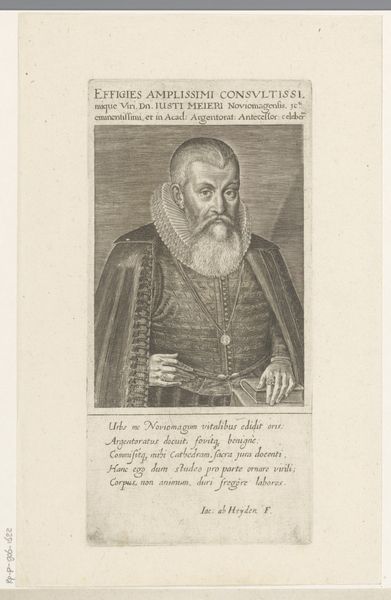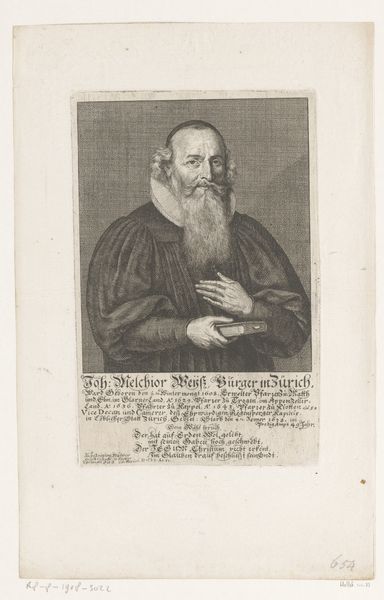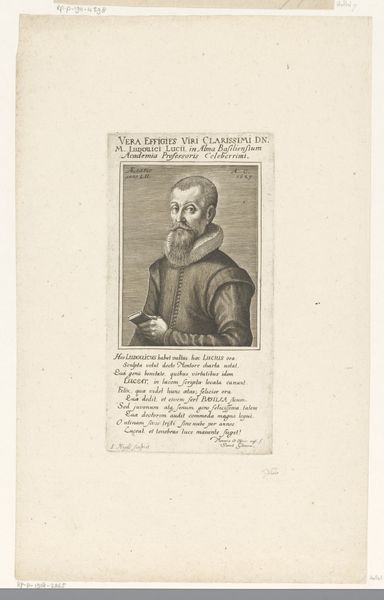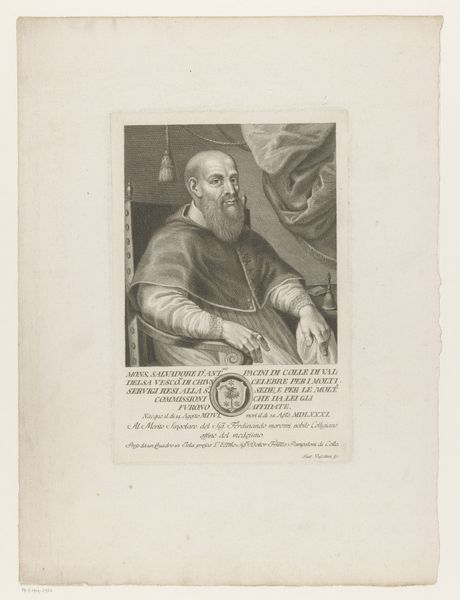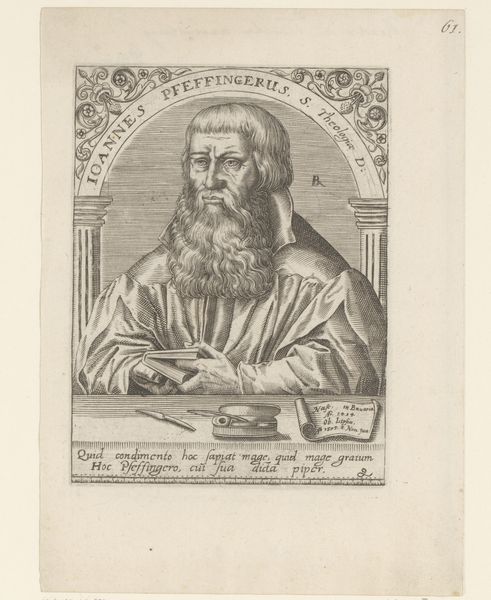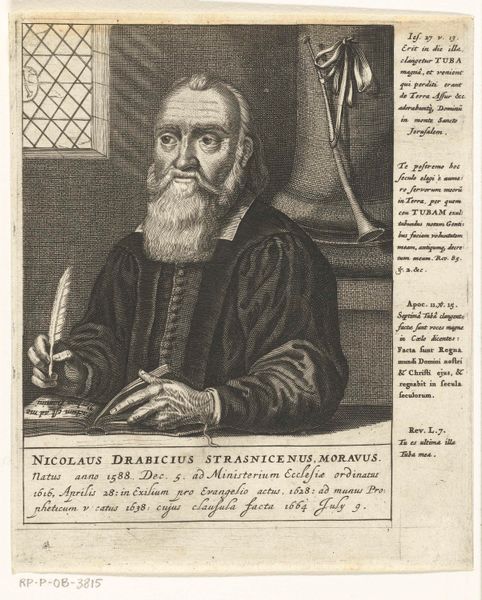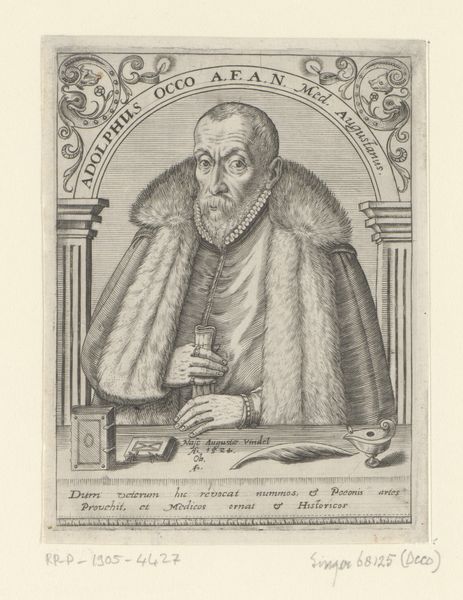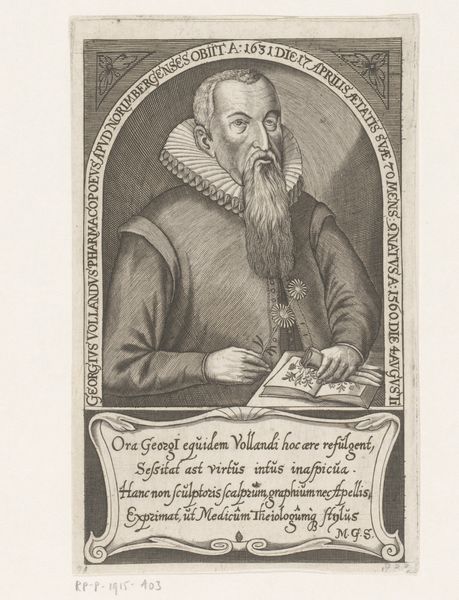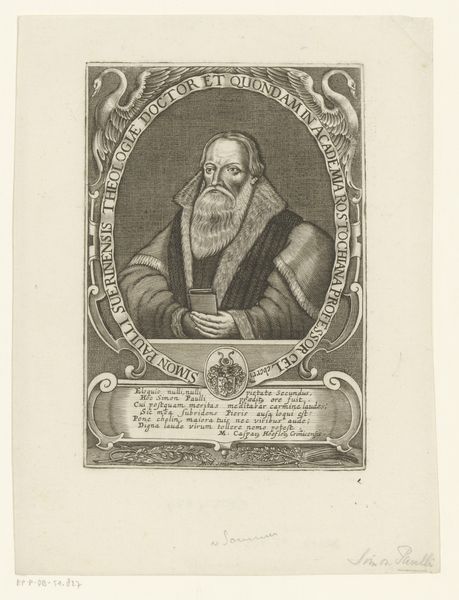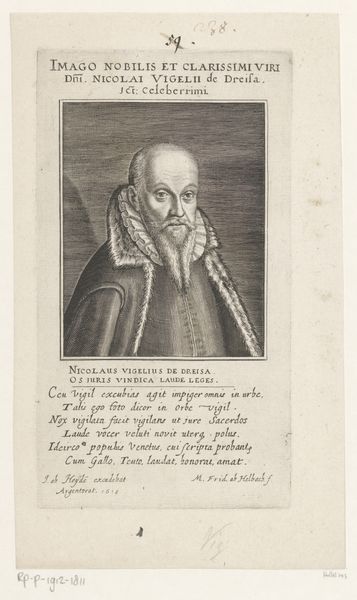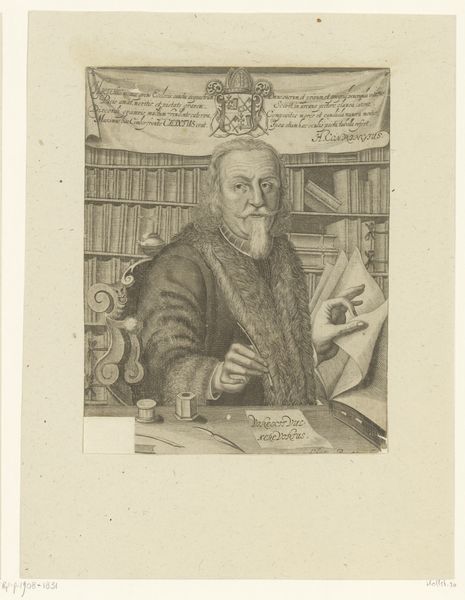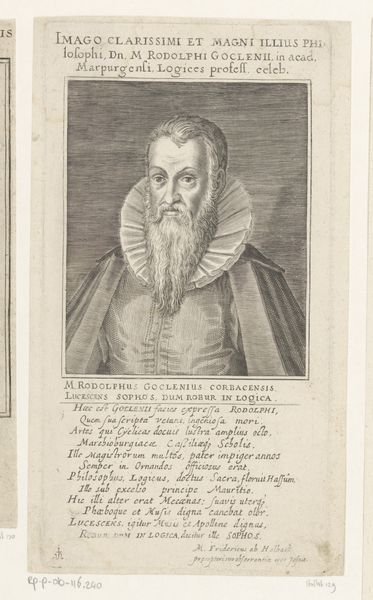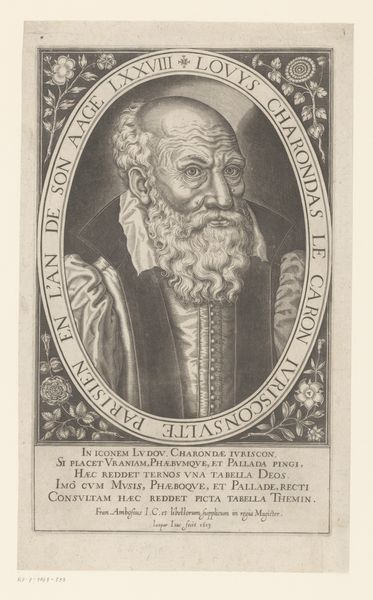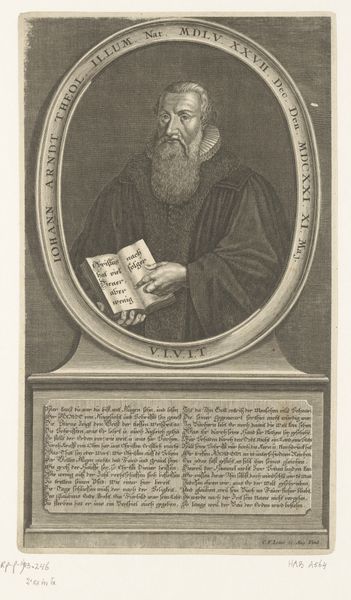
print, engraving
#
portrait
#
baroque
# print
#
old engraving style
#
engraving
Dimensions: height 192 mm, width 127 mm
Copyright: Rijks Museum: Open Domain
Curator: This is a portrait of Hans Alenson, an engraving attributed to Crispijn van de Passe the Younger, dating from 1604 to 1670. It's currently held in the Rijksmuseum. Editor: My initial impression is one of contemplative intensity. The figure’s direct gaze and the stark contrast of light and shadow create a compelling and rather austere image. Curator: Indeed. As a print, the work is all about the process of transferring image through a prepared plate, likely copper, where lines are incised to hold ink. Then, it's meticulously pressed onto paper to multiply this one man's likeness for broader circulation. The consumption and availability of printed portraits like this reflect the changing social dynamics of the period. Editor: Absolutely, and think about the symbolic weight carried by his open book. Its presence suggests learnedness and the importance of literacy, a connection to both religious and secular wisdom. We are invited into his inner, intellectual life. His calm disposition combined with the direct address creates an intriguing cultural symbol. Curator: You’re right. And considering this was made possibly for circulation beyond family and close community, it also reflects the market forces at work, creating celebrity around religious or political figures. Think about the material and financial resources invested to disseminate an image, the skilled labor necessary to bring it into fruition, and the market for prints such as these. Editor: Looking again, I am also seeing the texture that has been created in this engraving. He certainly looked distinguished, did you notice his clothing style too? The dark garments along with the white, starkly starched collar emphasizes piety and gravitas. His steady gaze and firm grasp upon the book point to an individual firm in conviction, almost a living emblem. Curator: It does show the artist's ability to utilize this technology to bring about an accurate reproduction of light and shadows of one of Haarlem’s important personalities. This in itself carries a value that is hard to come by today, particularly considering its history and purpose in social and material structures of the time. Editor: The interplay between the tangible image and the intangible aura of the subject is thought-provoking. Thank you for guiding my eye. Curator: And thank you for sharing your insights; examining both the symbols and labor inherent within an art form allows for broader perspective.
Comments
No comments
Be the first to comment and join the conversation on the ultimate creative platform.
